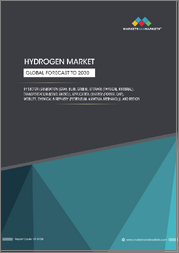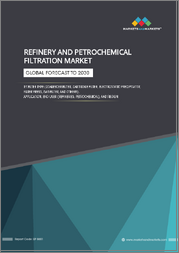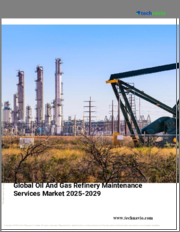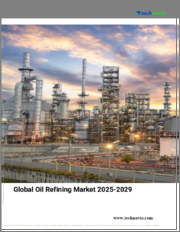
|
시장보고서
상품코드
1620827
정제 및 석유화학용 여과 시장 : 필터 유형, 용도, 최종 사용자별 - 세계 예측(2025-2030년)Refinery & Petrochemical Filtration Market by Filter Type (Bag Filter, Cartridge Filter, Coalescer Filter), Application (Liquid-Gas Separation, Liquid-Liquid Separation), End-User - Global Forecast 2025-2030 |
||||||
정제 및 석유화학 여과 시장은 2023년 5.19억 달러로 평가되며 2024년에는 5.53억 달러에 달할 것으로 예상되며, 연평균 7.08% 성장하여 2030년에는 8.39억 달러에 달할 것으로 예상됩니다.
정제 및 석유화학 여과의 범위에는 원유 및 석유화학제품에서 오염물질과 불순물을 분리하기 위한 공정, 부품, 시스템이 포함됩니다. 이 여과 공정은 운영 효율성, 규정 준수 및 환경 안전을 보장하는 데 매우 중요합니다. 여과의 필요성은 분리, 정제, 정제 등의 처리 단계에서 제품의 품질을 향상시키고 장치의 수명을 연장하기 위해 발생합니다. 용도는 석유화학 산업 전반 및 정제, 폴리머 제조, 화학제품 가공에 사용됩니다. 최종 용도에는 주로 석유화학 플랜트, 정유소 및 기타 석유계 산업이 포함됩니다. 시장 성장의 원동력은 세계 에너지 수요 증가, 엄격한 환경 규제, 여과 시스템의 기술 진보입니다. 재료 및 필터 설계의 혁신은 주요 영향요인이며, 예를 들어 나노 여과 기술의 급증은 보다 미세한 여과와 비용 효율성을 제공합니다. 최신 비즈니스 기회로 여과 시스템에 IoT와 AI를 통합하여 예측 유지보수를 가능하게 하고 프로세스를 최적화함으로써 다운타임과 운영 비용을 절감할 수 있습니다. 이러한 기회를 포착하기 위해 기업은 특정 산업 요구에 맞는 스마트하고 비용 효율적인 여과 솔루션을 개발하기 위한 연구 개발에 주력해야 합니다. 그러나 고액의 초기 투자, 변동하는 원가, 엄격한 정부 규제 등의 과제는 시장 성장을 방해할 수 있습니다. 또한 원유 조성의 변동이 여과 시스템의 효능에 영향을 미치고 운영상의 추가 문제가 될 수 있습니다. 환경 목표를 따르는 지속가능하고 환경친화적인 여과기술의 개발은 큰 혁신의 가능성이 있습니다. 시장은 급속한 기술 변화와 진화하는 규제 상황을 특징으로 하는 역동적인 시장으로, 지속적인 적응과 전략적 혁신이 요구됩니다. 경쟁력을 얻기 위해 기업은 고객 중심의 솔루션에 투자하고 신기술을 활용하고 연구 기관과의 협력을 촉진함으로써 이러한 진화를 계속하는 시장에서 우위를 차지해야 합니다.
| 주요 시장 통계 | |
|---|---|
| 기준년(2023) | 51억 9,000만 달러 |
| 추정년(2024) | 55억 3,000만 달러 |
| 예측년(2030) | 83억 9,000만 달러 |
| CAGR(%) | 7.08% |
시장 역학: 빠르게 진화하는 정유 및 석유화학 여과 시장의 주요 시장 인사이트 공개
정제 및 석유화학 여과 시장은 수요 및 공급의 역동적인 상호작용으로 인해 변화하고 있습니다. 이러한 시장 역학의 변화를 이해함으로써 기업은 정보에 입각한 투자 결정을 내리고, 전략적인 의사결정을 정교화하며, 새로운 비즈니스 기회를 포착할 수 있습니다. 이러한 트렌드를 종합적으로 파악함으로써 기업은 정치적, 지리적, 기술적, 사회적, 경제적 영역 전반에 걸친 다양한 리스크를 줄일 수 있으며, 소비자 행동과 그것이 제조 비용 및 구매 동향에 미치는 영향을 보다 명확하게 이해할 수 있습니다.
- 시장 성장 촉진요인
- 석유화학 산업의 지속적인 확장
- 세계 석유 정제 제품 수요 증가
- 석유화학 산업 전반에 걸쳐 자산 보호 및 설비 수명 연장에 대한 관심 증가
- 시장 성장 억제요인
- 정제 및 석유화학 여과 솔루션의 운영 및 유지보수 문제
- 시장 기회
- 정제 및 석유화학용 여과 시스템의 디지털화 및 스마트 여과 기술 도입
- 고성능 여과 솔루션의 잠재력 증대
- 시장 과제
- 정제 및 석유화학 여과 솔루션과 관련된 기술의 복잡성
Porter's Five Forces: 정유 및 석유화학 여과 시장을 탐색하기 위한 전략적 도구
Porter's Five Forces 프레임워크는 정유 및 석유화학 여과 시장 경쟁 구도를 이해하는 데 중요한 도구입니다. Porter의 Five Forces 프레임워크는 기업의 경쟁력을 평가하고 전략적 기회를 모색할 수 있는 명확한 방법을 제공합니다. 이 프레임워크는 기업이 시장 내 세력도를 평가하고 신규 사업의 수익성을 판단하는 데 도움이 됩니다. 이러한 통찰력을 통해 기업은 강점을 활용하고, 약점을 해결하고, 잠재적인 도전을 피하고, 보다 강력한 시장 포지셔닝을 확보할 수 있습니다.
PESTLE 분석 : 정유 및 석유화학용 여과 시장에서 외부 영향 파악
외부 거시 환경 요인은 정유 및 석유화학 여과 시장의 성과 역학을 형성하는 데 매우 중요한 역할을 합니다. 정치적, 경제적, 사회적, 기술적, 법적, 환경적 요인에 대한 분석은 이러한 영향을 탐색하는 데 필요한 정보를 제공하며, PESTLE 요인을 조사함으로써 기업은 잠재적 위험과 기회를 더 잘 이해할 수 있습니다. 이러한 분석을 통해 기업은 규제, 소비자 선호도, 경제 동향의 변화를 예측하고 선제적이고 능동적인 의사결정을 내릴 준비를 할 수 있습니다.
시장 점유율 분석 정유 및 석유화학용 여과 시장 경쟁 구도 파악
정제 및 석유화학 여과 시장의 상세한 시장 점유율 분석을 통해 공급업체의 성과를 종합적으로 평가할 수 있습니다. 기업은 수익, 고객 기반, 성장률과 같은 주요 지표를 비교하여 경쟁적 위치를 파악할 수 있습니다. 이 분석은 시장의 집중화, 단편화 및 통합 추세를 파악할 수 있으며, 공급업체는 치열한 경쟁 속에서 자신의 입지를 강화할 수 있는 전략적 의사결정을 내리는 데 필요한 통찰력을 얻을 수 있습니다.
FPNV 포지셔닝 - 매트릭스 정제 및 석유화학 여과 시장에서공급업체 성과 평가
FPNV 포지셔닝 매트릭스는 정유 및 석유화학 여과 시장에서 공급업체를 평가하는 중요한 도구입니다. 이 매트릭스를 통해 비즈니스 조직은 벤더의 비즈니스 전략과 제품 만족도를 기반으로 평가하여 목표에 부합하는 정보에 입각한 의사결정을 내릴 수 있으며, 4개의 사분면으로 벤더를 명확하고 정확하게 세분화하여 전략적 목표에 가장 적합한 파트너와 솔루션을 식별할 수 있습니다. 전략 목표에 가장 적합한 파트너와 솔루션을 식별할 수 있습니다.
정제 및 석유화학 여과 시장에서 성공하기 위한 전략 분석 및 권장 사항
정제 및 석유화학 여과 시장의 전략적 분석은 세계 시장에서 입지를 강화하고자 하는 기업에게 필수적입니다. 주요 자원, 역량 및 성과 지표를 검토함으로써 기업은 성장 기회를 식별하고 개선할 수 있습니다. 이러한 접근 방식을 통해 기업은 경쟁 환경의 도전을 극복하고 새로운 비즈니스 기회를 활용하여 장기적인 성공을 거둘 수 있는 체계를 구축할 수 있습니다.
이 보고서는 주요 관심 분야를 포괄하는 시장에 대한 종합적인 분석을 제공합니다.
1. 시장 침투도 : 현재 시장 환경의 상세한 검토, 주요 기업의 광범위한 데이터, 시장 도달 범위 및 전반적인 영향력 평가.
2. 시장 개척도: 신흥 시장에서의 성장 기회를 파악하고, 기존 분야의 확장 가능성을 평가하며, 미래 성장을 위한 전략적 로드맵을 제공합니다.
3. 시장 다각화 : 최근 제품 출시, 미개척 지역, 업계의 주요 발전, 시장을 형성하는 전략적 투자를 분석합니다.
4. 경쟁 평가 및 정보 : 경쟁 구도를 철저히 분석하여 시장 점유율, 사업 전략, 제품 포트폴리오, 인증, 규제 당국의 승인, 특허 동향, 주요 기업의 기술 발전 등을 검토합니다.
5. 제품 개발 및 혁신 : 미래 시장 성장을 가속할 것으로 예상되는 첨단 기술, 연구 개발 활동 및 제품 혁신을 강조합니다.
이해관계자들이 충분한 정보를 바탕으로 의사결정을 내릴 수 있도록 다음과 같은 중요한 질문에 대한 답변도 제공합니다.
1. 현재 시장 규모와 향후 성장 전망은?
2. 최고의 투자 기회를 제공하는 제품, 부문, 지역은?
3. 시장을 형성하는 주요 기술 동향과 규제의 영향은?
4. 주요 벤더 시장 점유율과 경쟁 포지션은?
5.벤더 시장 진입 및 철수 전략의 원동력이 되는 수익원과 전략적 기회는 무엇인가?
목차
제1장 서문
제2장 조사 방법
제3장 주요 요약
제4장 시장 개요
제5장 시장 인사이트
- 시장 역학
- 성장 촉진요인
- 성장 억제요인
- 기회
- 과제
- 시장 세분화 분석
- Porter's Five Forces 분석
- PESTEL 분석
- 정치적
- 경제적
- 사회적
- 기술적
- 법적
- 환경적
제6장 정제 및 석유화학용 여과 시장 필터 유형별
- 백 필터
- 카트리지 필터
- 코어 레서 필터
- 전기 집진 장치
- 필터 프레스
제7장 정제 및 석유화학용 여과 시장 : 용도별
- 액체 및 가스 분리
- 액액 분리
제8장 정제 및 석유화학용 여과 시장 : 최종 사용자별
- 화학약품
- 석유 및 가스
제9장 아메리카의 정제 및 석유화학용 여과 시장
- 아르헨티나
- 브라질
- 캐나다
- 멕시코
- 미국
제10장 아시아태평양의 정제 및 석유화학용 여과 시장
- 호주
- 중국
- 인도
- 인도네시아
- 일본
- 말레이시아
- 필리핀
- 싱가포르
- 한국
- 대만
- 태국
- 베트남
제11장 유럽·중동 및 아프리카의 정제 및 석유화학용 여과 시장
- 덴마크
- 이집트
- 핀란드
- 프랑스
- 독일
- 이스라엘
- 이탈리아
- 네덜란드
- 나이지리아
- 노르웨이
- 폴란드
- 카타르
- 러시아
- 사우디아라비아
- 남아프리카공화국
- 스페인
- 스웨덴
- 스위스
- 터키
- 아랍에미리트(UAE)
- 영국
제12장 경쟁 구도
- 시장 점유율 분석, 2023
- FPNV 포지셔닝 매트릭스, 2023
- 경쟁 시나리오 분석
- 전략 분석과 제안
기업 목록
- 3M Company
- Amazon Filters Ltd.
- Ayater Filtration
- Bea Technologies SpA
- Brother Filtration
- Camfil AB
- Celeros Flow Technology
- Champion Process Inc.
- Dynamic Filtration Ltd.
- Eaton Corporation PLC
- ESG Filtration Ltd.
- Filtration Group Corporation
- General Filtration
- Gopani Product Systems
- High Purity Northwest, Inc.
- HP Well Screen BV
- KEL India Filters
- Mott Corporation
- Nanjing Shinkai Filter Co., Ltd
- Norman Filter Company, LLC
- Pall Corporation
- Porvair PLC
- PS Filter
- Samco Technologies, Inc
- Sharplex Filters Pvt. Ltd.
- Sungov Engineering Private Limited
- Valin Corporation
- Xinxiang Saya Filters Co., Ltd.
- Yixing Huading Machinery Co.,Ltd
The Refinery & Petrochemical Filtration Market was valued at USD 5.19 billion in 2023, expected to reach USD 5.53 billion in 2024, and is projected to grow at a CAGR of 7.08%, to USD 8.39 billion by 2030.
The scope of refinery and petrochemical filtration encompasses processes, components, and systems used to separate contaminants and impurities from crude oil and petrochemical products. This filtration process is crucial to ensure operational efficiency, regulatory compliance, and environmental safety. The necessity of filtration arises in processing stages like separation, purification, and refining to enhance product quality and extend equipment life. Applications span across the petrochemical industry, where it's used in refining, manufacturing polymers, and processing chemicals. End-use primarily involves petrochemical plants, refineries, and other oil-based industries. Market growth is fueled by increasing global energy demand, stringent environmental regulations, and technological advancements in filtration systems. Innovations in materials and filter design are key influencing factors; for instance, the surge in nanofiltration techniques offers finer filtration and cost efficiency. Latest opportunities include the integration of IoT and AI in filtration systems to enable predictive maintenance and optimize processes, potentially reducing downtime and operational costs. To seize these opportunities, companies should focus on R&D to develop smart, cost-effective filtration solutions tailored for specific industry needs. However, challenges such as high initial investments, fluctuating raw material prices, and stringent government regulations can impede market growth. Additionally, the variability in crude oil composition can impact the effectiveness of filtration systems, posing further operational challenges. There is significant potential for innovation in developing sustainable and eco-friendly filtration technologies that align with environmental goals. The market is dynamic, characterized by rapid technological shifts and evolving regulatory landscapes, demanding continuous adaptation and strategic innovation. To gain a competitive edge, businesses should invest in customer-centric solutions, harness emerging technologies, and foster collaborations with research institutions to stay ahead in this ever-evolving market.
KEY MARKET STATISTICS Base Year [2023] USD 5.19 billion Estimated Year [2024] USD 5.53 billion Forecast Year [2030] USD 8.39 billion CAGR (%) 7.08% Market Dynamics: Unveiling Key Market Insights in the Rapidly Evolving Refinery & Petrochemical Filtration Market
The Refinery & Petrochemical Filtration Market is undergoing transformative changes driven by a dynamic interplay of supply and demand factors. Understanding these evolving market dynamics prepares business organizations to make informed investment decisions, refine strategic decisions, and seize new opportunities. By gaining a comprehensive view of these trends, business organizations can mitigate various risks across political, geographic, technical, social, and economic domains while also gaining a clearer understanding of consumer behavior and its impact on manufacturing costs and purchasing trends.
- Market Drivers
- Continuous expansion of the petrochemical industry
- Increasing demand for refined petroleum products globally
- Rising focus on asset protection and equipment longevity across petrochemical industry
- Market Restraints
- Operational and maintenance issues with refinery & petrochemical filtration solutions
- Market Opportunities
- Adoption of digitalization and smart filtration technologies in refinery & petrochemical filtration systems
- Increasing potential for high-performance filtration solutions
- Market Challenges
- Technological complexities associated with refinery & petrochemical filtration solutions
Porter's Five Forces: A Strategic Tool for Navigating the Refinery & Petrochemical Filtration Market
Porter's five forces framework is a critical tool for understanding the competitive landscape of the Refinery & Petrochemical Filtration Market. It offers business organizations with a clear methodology for evaluating their competitive positioning and exploring strategic opportunities. This framework helps businesses assess the power dynamics within the market and determine the profitability of new ventures. With these insights, business organizations can leverage their strengths, address weaknesses, and avoid potential challenges, ensuring a more resilient market positioning.
PESTLE Analysis: Navigating External Influences in the Refinery & Petrochemical Filtration Market
External macro-environmental factors play a pivotal role in shaping the performance dynamics of the Refinery & Petrochemical Filtration Market. Political, Economic, Social, Technological, Legal, and Environmental factors analysis provides the necessary information to navigate these influences. By examining PESTLE factors, businesses can better understand potential risks and opportunities. This analysis enables business organizations to anticipate changes in regulations, consumer preferences, and economic trends, ensuring they are prepared to make proactive, forward-thinking decisions.
Market Share Analysis: Understanding the Competitive Landscape in the Refinery & Petrochemical Filtration Market
A detailed market share analysis in the Refinery & Petrochemical Filtration Market provides a comprehensive assessment of vendors' performance. Companies can identify their competitive positioning by comparing key metrics, including revenue, customer base, and growth rates. This analysis highlights market concentration, fragmentation, and trends in consolidation, offering vendors the insights required to make strategic decisions that enhance their position in an increasingly competitive landscape.
FPNV Positioning Matrix: Evaluating Vendors' Performance in the Refinery & Petrochemical Filtration Market
The Forefront, Pathfinder, Niche, Vital (FPNV) Positioning Matrix is a critical tool for evaluating vendors within the Refinery & Petrochemical Filtration Market. This matrix enables business organizations to make well-informed decisions that align with their goals by assessing vendors based on their business strategy and product satisfaction. The four quadrants provide a clear and precise segmentation of vendors, helping users identify the right partners and solutions that best fit their strategic objectives.
Strategy Analysis & Recommendation: Charting a Path to Success in the Refinery & Petrochemical Filtration Market
A strategic analysis of the Refinery & Petrochemical Filtration Market is essential for businesses looking to strengthen their global market presence. By reviewing key resources, capabilities, and performance indicators, business organizations can identify growth opportunities and work toward improvement. This approach helps businesses navigate challenges in the competitive landscape and ensures they are well-positioned to capitalize on newer opportunities and drive long-term success.
Key Company Profiles
The report delves into recent significant developments in the Refinery & Petrochemical Filtration Market, highlighting leading vendors and their innovative profiles. These include 3M Company, Amazon Filters Ltd., Ayater Filtration, Bea Technologies SpA, Brother Filtration, Camfil AB, Celeros Flow Technology, Champion Process Inc., Dynamic Filtration Ltd., Eaton Corporation PLC, ESG Filtration Ltd., Filtration Group Corporation, General Filtration, Gopani Product Systems, High Purity Northwest, Inc., HP Well Screen B.V., KEL India Filters, Mott Corporation, Nanjing Shinkai Filter Co., Ltd, Norman Filter Company, LLC, Pall Corporation, Porvair PLC, PS Filter, Samco Technologies, Inc, Sharplex Filters Pvt. Ltd., Sungov Engineering Private Limited, Valin Corporation, Xinxiang Saya Filters Co., Ltd., and Yixing Huading Machinery Co.,Ltd.
Market Segmentation & Coverage
This research report categorizes the Refinery & Petrochemical Filtration Market to forecast the revenues and analyze trends in each of the following sub-markets:
- Based on Filter Type, market is studied across Bag Filter, Cartridge Filter, Coalescer Filter, Electrostatic Precipitator, and Filter Press.
- Based on Application, market is studied across Liquid-Gas Separation and Liquid-Liquid Separation.
- Based on End-User, market is studied across Chemical and Oil & Gas.
- Based on Region, market is studied across Americas, Asia-Pacific, and Europe, Middle East & Africa. The Americas is further studied across Argentina, Brazil, Canada, Mexico, and United States. The United States is further studied across California, Florida, Illinois, New York, Ohio, Pennsylvania, and Texas. The Asia-Pacific is further studied across Australia, China, India, Indonesia, Japan, Malaysia, Philippines, Singapore, South Korea, Taiwan, Thailand, and Vietnam. The Europe, Middle East & Africa is further studied across Denmark, Egypt, Finland, France, Germany, Israel, Italy, Netherlands, Nigeria, Norway, Poland, Qatar, Russia, Saudi Arabia, South Africa, Spain, Sweden, Switzerland, Turkey, United Arab Emirates, and United Kingdom.
The report offers a comprehensive analysis of the market, covering key focus areas:
1. Market Penetration: A detailed review of the current market environment, including extensive data from top industry players, evaluating their market reach and overall influence.
2. Market Development: Identifies growth opportunities in emerging markets and assesses expansion potential in established sectors, providing a strategic roadmap for future growth.
3. Market Diversification: Analyzes recent product launches, untapped geographic regions, major industry advancements, and strategic investments reshaping the market.
4. Competitive Assessment & Intelligence: Provides a thorough analysis of the competitive landscape, examining market share, business strategies, product portfolios, certifications, regulatory approvals, patent trends, and technological advancements of key players.
5. Product Development & Innovation: Highlights cutting-edge technologies, R&D activities, and product innovations expected to drive future market growth.
The report also answers critical questions to aid stakeholders in making informed decisions:
1. What is the current market size, and what is the forecasted growth?
2. Which products, segments, and regions offer the best investment opportunities?
3. What are the key technology trends and regulatory influences shaping the market?
4. How do leading vendors rank in terms of market share and competitive positioning?
5. What revenue sources and strategic opportunities drive vendors' market entry or exit strategies?
Table of Contents
1. Preface
- 1.1. Objectives of the Study
- 1.2. Market Segmentation & Coverage
- 1.3. Years Considered for the Study
- 1.4. Currency & Pricing
- 1.5. Language
- 1.6. Stakeholders
2. Research Methodology
- 2.1. Define: Research Objective
- 2.2. Determine: Research Design
- 2.3. Prepare: Research Instrument
- 2.4. Collect: Data Source
- 2.5. Analyze: Data Interpretation
- 2.6. Formulate: Data Verification
- 2.7. Publish: Research Report
- 2.8. Repeat: Report Update
3. Executive Summary
4. Market Overview
5. Market Insights
- 5.1. Market Dynamics
- 5.1.1. Drivers
- 5.1.1.1. Continuous expansion of the petrochemical industry
- 5.1.1.2. Increasing demand for refined petroleum products globally
- 5.1.1.3. Rising focus on asset protection and equipment longevity across petrochemical industry
- 5.1.2. Restraints
- 5.1.2.1. Operational and maintenance issues with refinery & petrochemical filtration solutions
- 5.1.3. Opportunities
- 5.1.3.1. Adoption of digitalization and smart filtration technologies in refinery & petrochemical filtration systems
- 5.1.3.2. Increasing potential for high-performance filtration solutions
- 5.1.4. Challenges
- 5.1.4.1. Technological complexities associated with refinery & petrochemical filtration solutions
- 5.1.1. Drivers
- 5.2. Market Segmentation Analysis
- 5.2.1. Filter Type: Growing demand for bag filters for the filtration of large volumes of material that need to be filtered at low pressures
- 5.2.2. Application: Increasing utilization of liquid-liquid separation across the chemical plants
- 5.2.3. End-User: Rising investments in oil & gas sector by economies to meet domestic demands
- 5.3. Porter's Five Forces Analysis
- 5.3.1. Threat of New Entrants
- 5.3.2. Threat of Substitutes
- 5.3.3. Bargaining Power of Customers
- 5.3.4. Bargaining Power of Suppliers
- 5.3.5. Industry Rivalry
- 5.4. PESTLE Analysis
- 5.4.1. Political
- 5.4.2. Economic
- 5.4.3. Social
- 5.4.4. Technological
- 5.4.5. Legal
- 5.4.6. Environmental
6. Refinery & Petrochemical Filtration Market, by Filter Type
- 6.1. Introduction
- 6.2. Bag Filter
- 6.3. Cartridge Filter
- 6.4. Coalescer Filter
- 6.5. Electrostatic Precipitator
- 6.6. Filter Press
7. Refinery & Petrochemical Filtration Market, by Application
- 7.1. Introduction
- 7.2. Liquid-Gas Separation
- 7.3. Liquid-Liquid Separation
8. Refinery & Petrochemical Filtration Market, by End-User
- 8.1. Introduction
- 8.2. Chemical
- 8.3. Oil & Gas
9. Americas Refinery & Petrochemical Filtration Market
- 9.1. Introduction
- 9.2. Argentina
- 9.3. Brazil
- 9.4. Canada
- 9.5. Mexico
- 9.6. United States
10. Asia-Pacific Refinery & Petrochemical Filtration Market
- 10.1. Introduction
- 10.2. Australia
- 10.3. China
- 10.4. India
- 10.5. Indonesia
- 10.6. Japan
- 10.7. Malaysia
- 10.8. Philippines
- 10.9. Singapore
- 10.10. South Korea
- 10.11. Taiwan
- 10.12. Thailand
- 10.13. Vietnam
11. Europe, Middle East & Africa Refinery & Petrochemical Filtration Market
- 11.1. Introduction
- 11.2. Denmark
- 11.3. Egypt
- 11.4. Finland
- 11.5. France
- 11.6. Germany
- 11.7. Israel
- 11.8. Italy
- 11.9. Netherlands
- 11.10. Nigeria
- 11.11. Norway
- 11.12. Poland
- 11.13. Qatar
- 11.14. Russia
- 11.15. Saudi Arabia
- 11.16. South Africa
- 11.17. Spain
- 11.18. Sweden
- 11.19. Switzerland
- 11.20. Turkey
- 11.21. United Arab Emirates
- 11.22. United Kingdom
12. Competitive Landscape
- 12.1. Market Share Analysis, 2023
- 12.2. FPNV Positioning Matrix, 2023
- 12.3. Competitive Scenario Analysis
- 12.3.1. Graybar To Acquire Valin Corporation
- 12.3.2. Advancing Sustainably: Construction progressing on Residue Filtration facility in Brazil
- 12.4. Strategy Analysis & Recommendation
Companies Mentioned
- 1. 3M Company
- 2. Amazon Filters Ltd.
- 3. Ayater Filtration
- 4. Bea Technologies SpA
- 5. Brother Filtration
- 6. Camfil AB
- 7. Celeros Flow Technology
- 8. Champion Process Inc.
- 9. Dynamic Filtration Ltd.
- 10. Eaton Corporation PLC
- 11. ESG Filtration Ltd.
- 12. Filtration Group Corporation
- 13. General Filtration
- 14. Gopani Product Systems
- 15. High Purity Northwest, Inc.
- 16. HP Well Screen B.V.
- 17. KEL India Filters
- 18. Mott Corporation
- 19. Nanjing Shinkai Filter Co., Ltd
- 20. Norman Filter Company, LLC
- 21. Pall Corporation
- 22. Porvair PLC
- 23. PS Filter
- 24. Samco Technologies, Inc
- 25. Sharplex Filters Pvt. Ltd.
- 26. Sungov Engineering Private Limited
- 27. Valin Corporation
- 28. Xinxiang Saya Filters Co., Ltd.
- 29. Yixing Huading Machinery Co.,Ltd




















